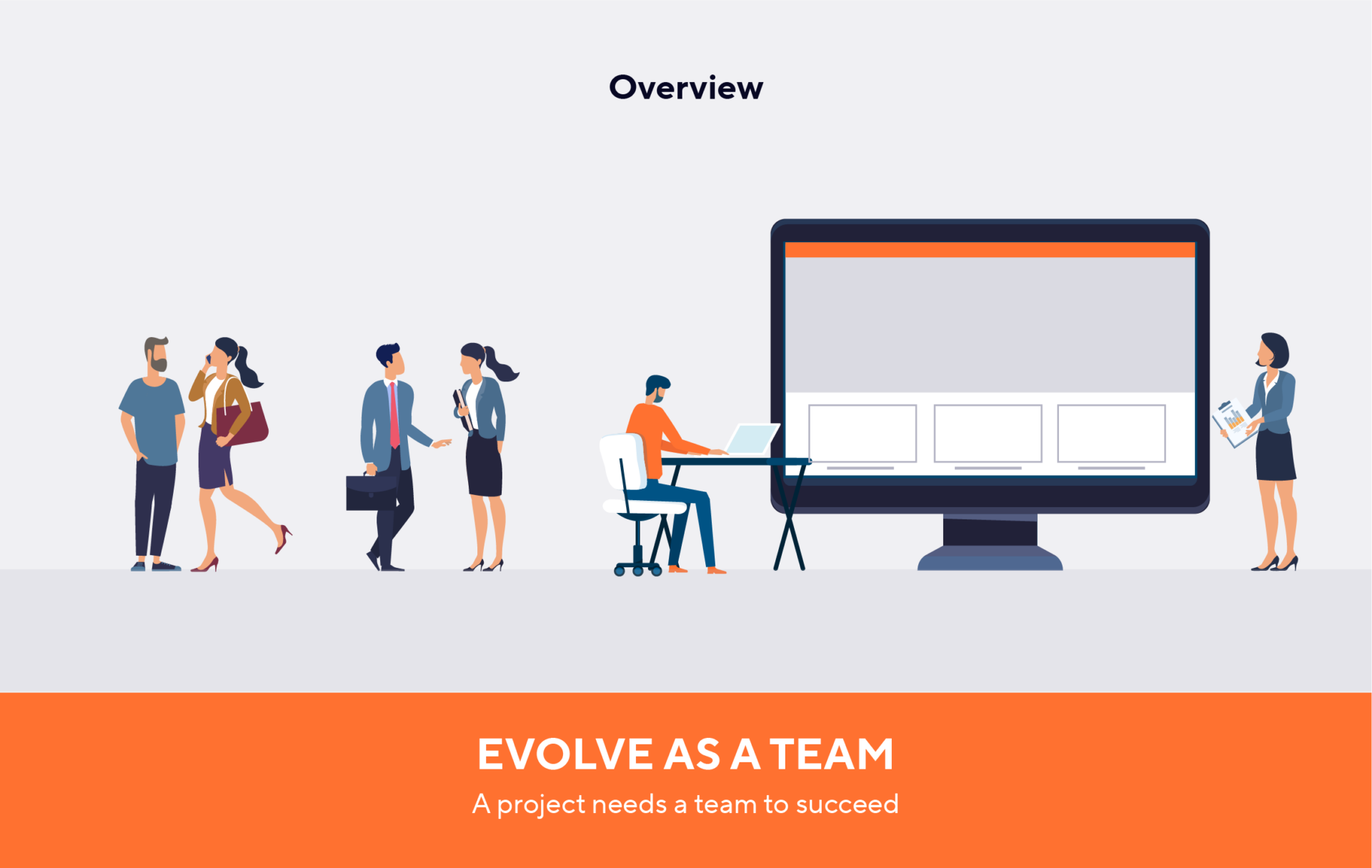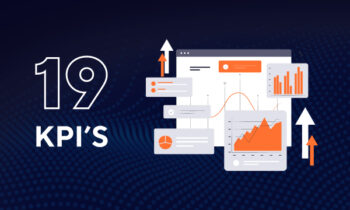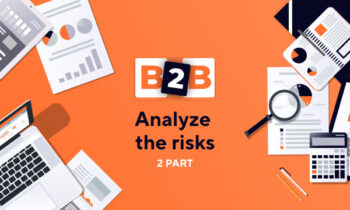Our tips for a successful B2B ecommerce site deployment – Part 1: Risk analysis

Activate all the levers that will contribute to the success of your eBusiness platform
The success of your B2B ecommerce strategy does not rely solely on the choice of technology or your marketing skills. While these are crucial, eBusiness must be viewed as a combination of techniques and know-how, each acting as a lever. An e-commerce site is an ecosystem made up of several components, each addressing a specific challenge. To succeed in eBusiness, you must identify the components that are relevant to your customer base, deploy them, and optimize them as your platform grows.
To help you understand the various facets of a B2B ecommerce strategy, we offer a series of articles addressing the challenges, tools, and specific features of each stage in your platform’s growth.
Analyzing risks: essential for a successful B2B ecommerce project
Although the current climate might create a sense of urgency, it is crucial to carefully assess the risks associated with your B2B ecommerce project before diving into its development. Being aware of these risks won’t necessarily prevent them, but it will help you stay vigilant and respond quickly if issues arise.
In the first article of our series on B2B ecommerce success, we review the 14 most common pitfalls you might encounter (here are the first 7).
🚨 Risk #1: A long time-to-market
After months of consideration, you’ve decided that ecommerce is a strategic priority for your business and you need to act quickly. Great. But keep in mind that your competitors have likely reached -the same conclusion. In fact, they may have done so earlier, and while you are just starting your project, they may already be coding their platform.
The window of opportunity is not endless. It is, in fact, very short, especially given the ongoing changes in purchasing behavior due to the health crisis.
You need to launch your platform quickly because your customers are waiting for it. They have urgent needs, and the first company to go live will gain a significant competitive advantage.
Approaching an ecommerce project like any traditional IT project — with lengthy qualification phases, extensive development cycles, and numerous steering committees — carries a real risk of a “tunnel effect”. This leads to delays, stretching out the project timeline and postponing the moment your customers can finally purchase your products online.
It’s common to see teams lose sight of the initial goal and become obsessed with creating the “perfect” platform, drifting like a ship without a rudder.
To avoid this, your project must be guided by the goal of quickly getting your platform to market, even if the first version is incomplete. You can refine it later. This requires a mindset shift: embracing uncertainty and learning by doing through agile approaches and continuous market feedback.
🚨 Risk #2: Creating silos
Online sales are often treated as a completely separate channel from the company’s traditional operations. Business leaders may wrongly believe that their ecommerce site will primarily serve to acquire new customers, leading them to create a kind of “startup” within the company, isolated from the rest of the organization.
This approach often results in three major pitfalls that can be difficult to overcome:
1 – Customer confusion
- Since systems weren’t designed holistically, a customer who purchases online may not be able to get assistance or support from your physical locations.
- Depending on whether they buy online or through traditional channels, customers may deal with different representatives and may not receive the same terms or benefits.
- From the customer’s perspective, this inconsistency is baffling.
2 – Organizational complexity
- The “startup” approach to ecommerce often involves deploying new tools distinct from existing ones and building dedicated support teams for online sales.
- This leads to redundancy: different employees performing similar roles with different tools, reporting to different managers.
- This duplication increases costs, scatters expertise and data across different environments, and results in a loss of control over the entire value chain.
3 – Internal conflicts
- Creating a separate ecommerce team can lead to feelings of injustice within your existing teams.
- The ecommerce project is often treated as the future of the business, receiving significant resources and support from management, sometimes without scrutiny.
- This can quickly lead to jealousy from other departments and even internal conflicts, which ultimately harm the customer experience.
To avoid creating antagonistic silos, ecommerce should not be treated as a separate entity but as a business transformation project. This strategic initiative must be integrated into all departments, so they can adopt it and incorporate it into their daily operations.
🚨 Risk #3: Neglecting change management
To launch an ecommerce site quickly using traditional methods, it can be tempting to move forward with a small core team, focusing solely on technological aspects. The operational teams are often left out, and ecommerce decisions are made by a few “experts” who impose their vision.
Once sales begin, issues related to delivery, accounting, taxation, or after-sales service inevitably arise, leaving operational teams unprepared to handle them.
The consequences are significant:
- For customers, a perception of disorganization and amateurism, damaging your company’s image and service quality.
- For internal teams, frustration and dissatisfaction due to unclear processes, reduced service quality, and increased workloads.
Moving fast does not mean moving alone. Agile methodologies encourage workshops that involve representatives from all departments right from the start. This approach ensures everyone understands the project’s objectives and helps create solutions collaboratively.
Solutions co-developed by teams will be much easier to implement later, as they were actively involved in their creation.
As discussed earlier, ecommerce is a company-wide transformation project. It requires change management that involves all departments from the start and continues through the platform’s launch. It’s a business project, not just a project within the business.

🚨 Risque n°4 : Oublier la rentabilité
While it may be tempting to think otherwise, an ecommerce site exists to sell and generate profit. Like any sales channel, this remains the ultimate goal of the project.
Under the influence of certain consultants or “dream-selling” agencies, business leaders can sometimes lose sight of this, focusing solely on the platform itself. They want their website to be the most beautiful—at any cost.
The result: Without clear limits, the project can quickly spiral out of control. Development costs skyrocket, timelines are delayed, and sales take longer to materialize. After the launch, in an attempt to catch up, marketing budgets are massively increased, but this additional spending happens in an immature system with multiple leaks. Without tracking indicators or steering committees, the ecommerce platform can quickly turn into a money pit, unable to generate any profit.
From the very beginning of the project, the management team must set clear objectives in terms of budget, timeline, and results. While revenue growth is essential, profit margins must not be overlooked and should be systematically compared to those of other sales channels.
Once the platform is live, precise tracking indicators should be established and reviewed weekly against initial objectives. These results must be shared regularly with all teams—including technical teams—with clear instructions for adjustments if any metric falls short of expectations.
🚨 Risk #5: Lacking humility
Rome wasn’t built in a day. Amazon, Vistaprint, or even our client RAJA — all of these ecommerce leaders took years of work and millions of euros in R&D investments to reach their current levels of success.
If you’re just starting out in ecommerce, beware of delusions of grandeur:
- Trying to do everything at once
- Targeting all customer segments immediately
- Setting goals that far exceed your company’s current size
A mismatch between your project’s ambitions and your company’s resources is a major factor in failure.
- Your company doesn’t have unlimited resources.
- Your timeline is tight.
- You won’t be able to compete with industry giants right away.
- You won’t be able to reach all your target customers immediately.
To avoid this trap, you must be humble and pragmatic. Be aware of both your limits and the resources at your disposal. Focus on your core objectives to prioritize and pace the various phases of your project.
The key to success lies in this mindset: don’t aim for perfection at the start. Don’t expect to have everything upon launch. Resist the quest for perfection. Instead, consider your platform a continuous work in progress, to be refined and improved based on customer feedback.
🚨 Risk #6: Lacking ambition
While some companies dream too big, others think too small. Their strategy is often short-term and stuck in their current way of operating, without considering potential growth opportunities. They build their platform for today’s market, without envisioning tomorrow’s possibilities.
This leads to paradoxical situations, where market demand is strong, but the ecommerce site can’t keep up…
What initially looks like a success story quickly turns into a disaster because the company can’t handle the growth it created.
How does this happen? Simply by underestimating the platform’s capacity for success. Thinking too small, lacking ambition, and trying to cut costs can leave leaders ill-prepared for rapid growth, creating bottlenecks that choke their business a few months later.
To avoid creating tomorrow’s bottlenecks today, you must think in x10 mode.
- Generating €1 million in revenue? Your platform must be able to handle €10 million. And so on.
- Don’t limit your site to a single language, currency, or distribution channel. Envision selling in new countries or regions where you’re not yet present.
- Anticipate new distribution models that may emerge, and ensure your platform can support them.
- Never underestimate market demand. You may experience sudden, rapid success, and your ecommerce platform must be able to handle it. This means your platform’s infrastructure and architecture must be elastic, capable of withstanding such pressure without breaking.
In the startup world, this is known as scalability — the ability to support fast and sudden growth by adapting your business model to your audience size.
🚨 Risk #7: Poor product-market fit
There’s a big difference between speed and haste. In an effort to reduce time-to-market, there’s a risk that your platform won’t meet customer expectations.
How many promising ecommerce platforms have disappointed users at launch or were abandoned within months due to lack of interest?
Internally, the risk is just as high: if the project is poorly thought out and doesn’t include all relevant departments, it can lead to an unusable IT environment that will eventually be replaced by other tools and processes.
It’s crucial to identify the expectations of all future platform users—both external (customers and suppliers) and internal (employees)—early in the project. These expectations must be prioritized and aligned with the strategic objectives of the project.
Based on these objectives, the marketing team should develop the Business Value Proposition of the future platform.
At regular intervals, project managers must ensure—through testing, for example—that these objectives are met, that no essential features have been neglected, and that the value proposition delivers on its promises.
To be continued…
We’ll explore new risks in our next article (from risks #8 to #13)!


